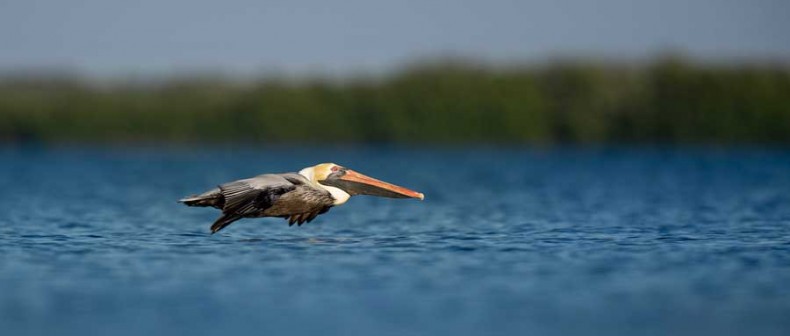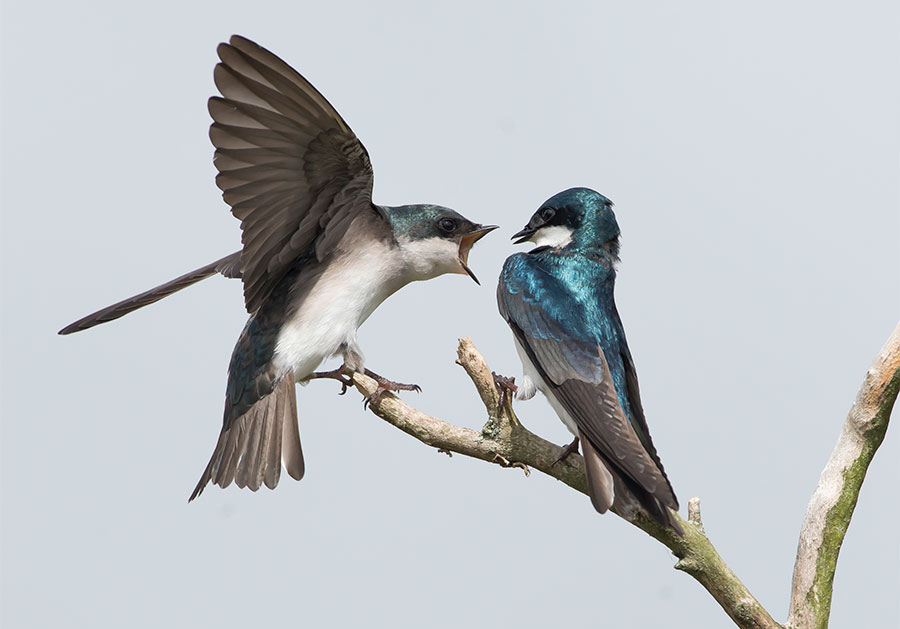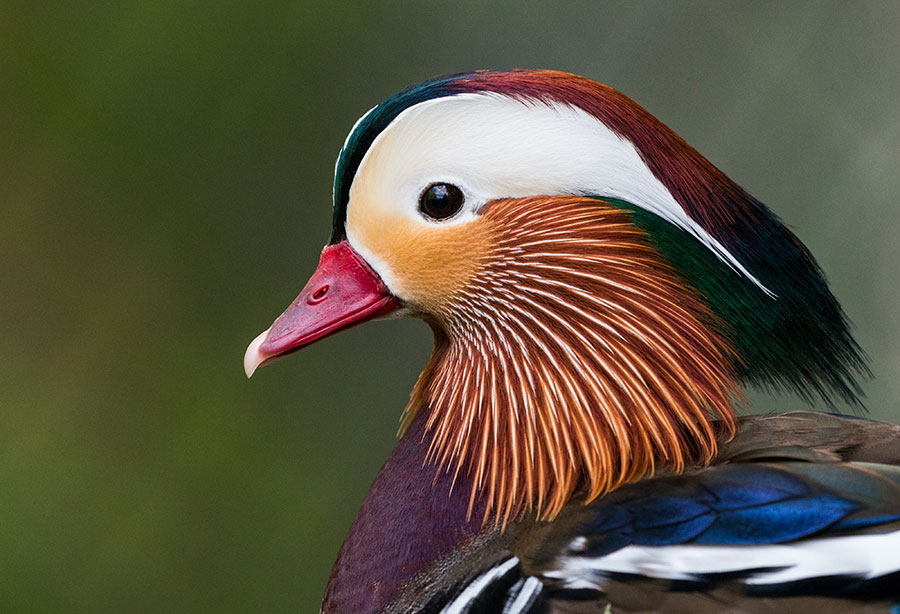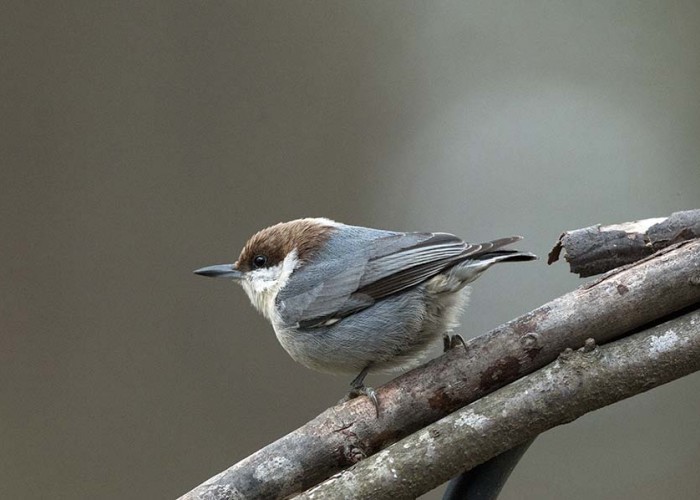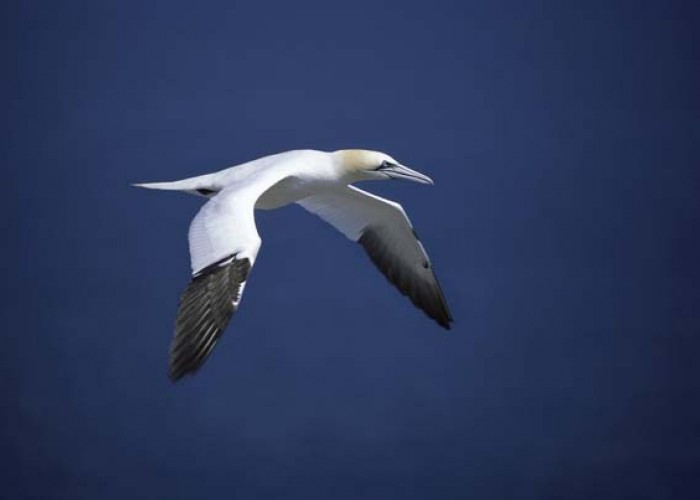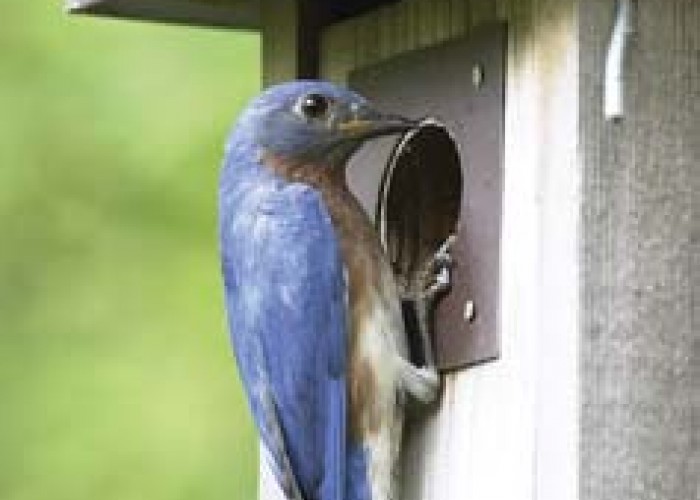How to Become a Birder in Time for Spring
North Carolina is a birding paradise
By By Gayle Gresham and Karen Olson HouseA brown pelican glides over the water. Photo by Ray Hennessy.
Looking for your travel to take flight this year? Become a birder and enjoy all kinds of new places to visit. North Carolina is home to a diverse array of great birdwatching spots and natural habitats, and you have plenty of options to explore.
Spring is a wonderful time to watch birds — the males sport colorful plumage to attract mates, and their courtships can include nutty head dips and daring dives. Before you venture forth with your map, you can easily start your hobby by simply looking out your window and seeing the birds that congregate in your yard. Is that a finch? What type of finch? (North Carolina has 11 recorded species.)
To find out, you can go old school by checking a field guide like Peterson’s or Sibley’s, or look up finches on allaboutbirds.org from the Cornell Lab of Ornithology. Or, download the Merlin Bird ID app to your smartphone. The app asks five questions to help identify a bird, then pulls up bird photos matching the description that has been seen in your region. Or, take a photo of the bird, upload it to Merlin and it will identify the bird for you.
Those who catch birdwatching fever often note down the birds they have seen or heard. A list can be kept in a journal or in a special birding notebook, or you can make simple notations of dates and places beside pictures in a guide book. Computer list options include Birder’s Diary software, which also allows photos, or the eBird mobile app for cellphones, which uses GPS coordinates for bird species sightings.
Birding across NC
Your interest in birds has been piqued, and now you’d like to see more birds. It’s time to travel! Many migratory birds, including songbirds, fly to NC’s mountains during April and May. Good birding spots along the Blue Ridge Parkway include Linville Gorge (Milepost 316.4); Great Craggy Mountains (MP 360-382); and Shining Rock (MP 420.2).
The barrier islands along the Outer Banks are stimulating places to bird. With more than 250 species to be found, birding is a year-round activity at Cape Lookout National Seashore. Birders also enjoy strolling the open woods at Weymouth Woods-Sandhill Nature Preserve in the Piedmont area throughout the year.
There are, of course, many more birding spots. The North Carolina Birding Trail is a driving trail linking birders and tourists with great birding sites across the state and the local communities in which they are found. A wealth of information, including designated sites, can be found on its interactive website. There, you can view maps, search for sites by regions and learn more about additional NC birding resources. The Trail, a partnership project, also published a series of three spiral-bound trail guides for the coast, Piedmont and mountain regions in 2007–2009, along with digital versions (2009–2011). They cover 310 sites in all, and birders continue to find them quite helpful.
Finding companions
The Carolina Bird Club supports the birding community in the Carolinas and holds meetings, workshops and trips. The Audubon Society also offers a range of events. North Carolina Audobon chapters include: Cape Fear Audobon Society, serving Brunswick, Pender and New Hanover counties; New Hope Audobon Society (Chatham, Durham, and Orange counties); and High Country Audobon Society (Avery, Ashe, Alleghany, Watauga, and Wilkes counties). To learn more about other chapters, call 919-929-3899 or visit nc.audubon.org.
Source: SylvanHeightsBirds
An exotic park
Sylvan Heights Bird Park makes it easy to see gorgeous, exotic birds from around the world without leaving the state. This unique and refreshing facility in eastern NC is designed so visitors can enjoy memorable, up-close experiences with a variety of winged wonders, including waterfowl, parrots, toucans, owls and cranes.
Home to more than 2,000 birds, the complex includes an 18-acre park open to the public, along with a breeding center. Its spacious, walk-through aviaries display birds from South America, North America, Europe, Africa, Asia and Australia. The aviaries are surrounded by tranquil gardens and lush natural areas, which enhance the beauty of the birds. Guests can feed flamingoes and parakeets in the interactive Landing Zone exhibit.
Sylvan Heights Bird Park
Scotland Neck [Map ![]() ]
]
shwpark.com | 252-826-3186
About the Author
Information in this article was compiled by Gayle Gresham, who writes from her electric-co-op powered home in Elbert, Colorado, and Contributing Editor Karen Olson House.-
More for the birds
-
Share this story:

